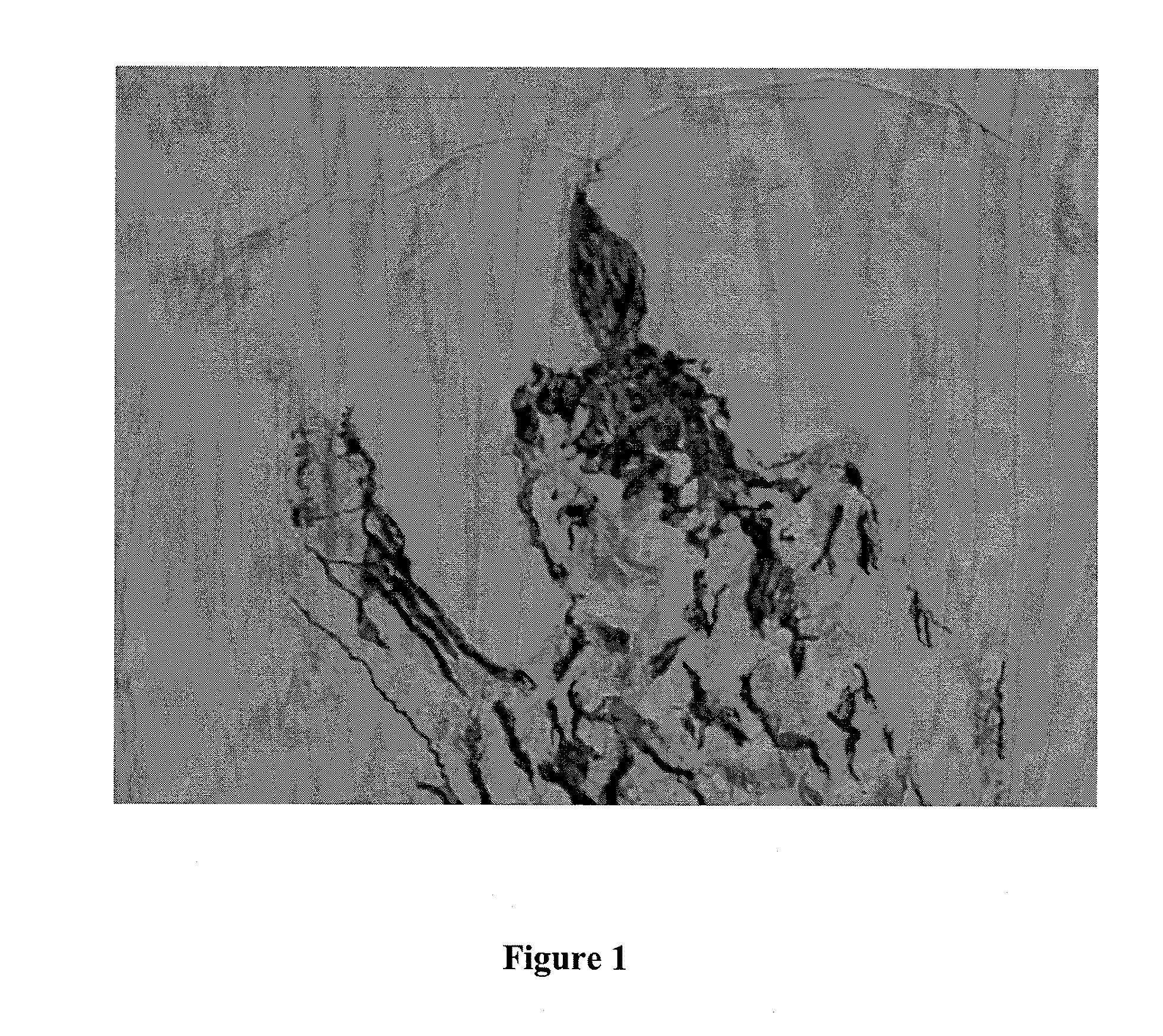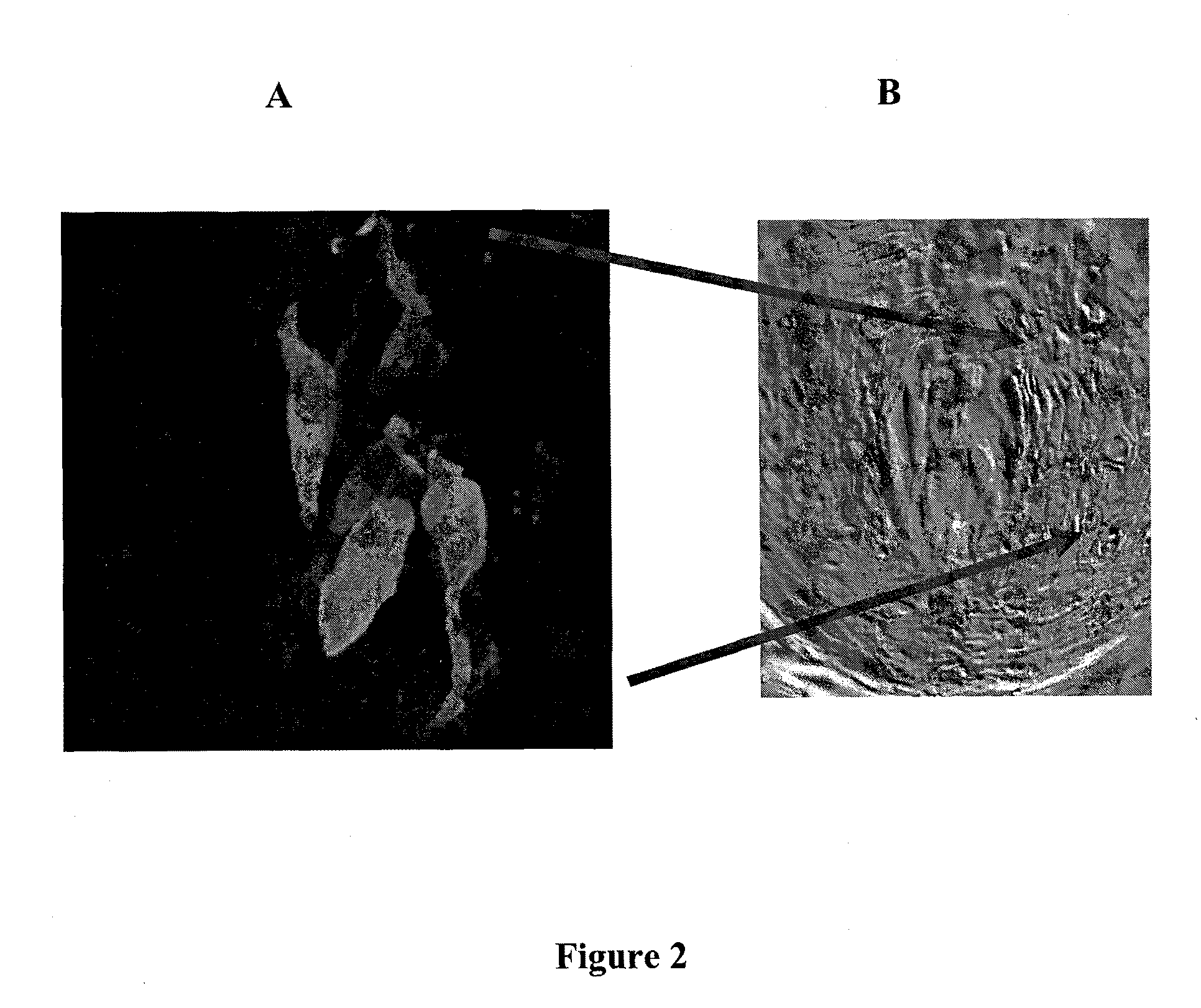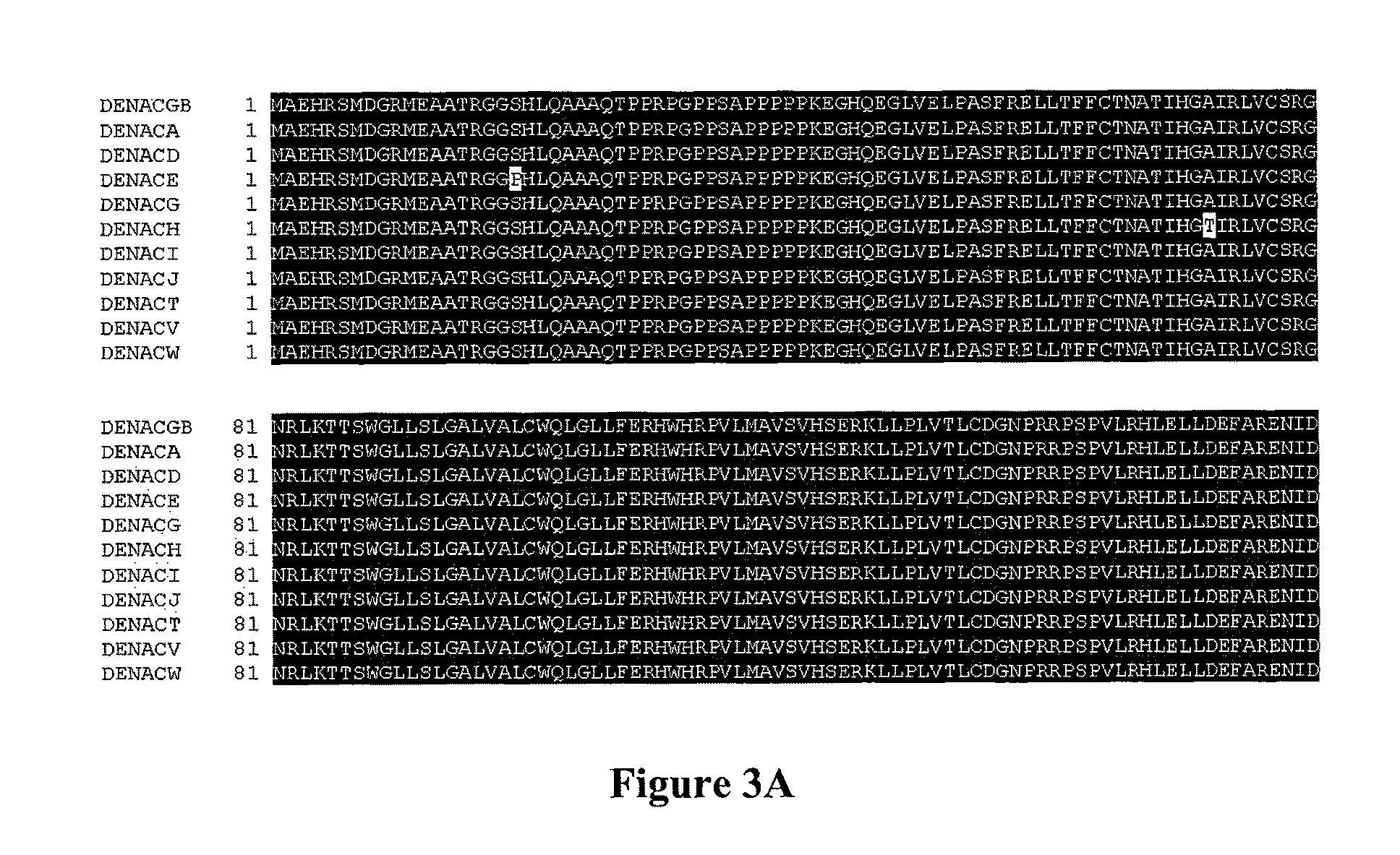Human salty taste receptor and methods of modulating salty taste perception
- Summary
- Abstract
- Description
- Claims
- Application Information
AI Technical Summary
Benefits of technology
Problems solved by technology
Method used
Image
Examples
example 1
[0106]Procedure for Obtaining Human Fungiform Papillae and Taste Cells. Human fungiform papillae containing taste buds are routinely obtained from the anterior dorsal surface of the tongues of volunteers by a minor surgical biopsy procedure carried out under local anesthesia. The general procedure is described in Spielman, A I et al. Collection of taste tissue from mammals. Experimental Cell Biology of Taste and Olfaction. Spielman A I and Brand J G eds. CRC Press, Boca Raton, Fla., pp 25-32. Volunteers give informed consent. This procedure has been reviewed and approved by an Institutional Review Board. The excised papillae can be subsequently used either for RNA extraction, immunohistochemistry or in situ hybridization, or in a procedure that results in a suspension of isolated taste cells.
[0107]RNA extraction, histochemistry an in situ analysis. When used for total RNA extraction, papillae are immediately subjected to a standard extraction procedure using TRIzol™ reagent (Invitro...
example 2
Identification of the Human Salty Taste Receptor and the Importance of the Delta Subunit
[0113]In accordance with the present invention, the delta subunit of the ENaC in the fungiform (taste) papillae of humans. The clones in which the subunit was detected were from pooled cDNA from 3 individuals who agreed to undergo a biopsy procedure to remove several fungiform papillae from the anterior dorsal surface of the tongue.
[0114]Characteristics of the delta subunit. The delta subunit of the epithelial sodium channel was detected in the fungiform papillae from thirteen individuals by RT-PCR. The detected fragments were amplified by PCR and subcloned. The polynucleotide encoding delta subunit from these thirteen individuals was then fully sequenced. It was determined that the human delta subunit from fungiform papillae differed from human delta subunit cloned from kidney in the putative amiloride binding site. The putative amiloride binding site contains a tyrosine at amino acid 532 in del...
example 3
Preparation of Liposomes and Artificial Lipid Bilayers
[0126]This example demonstrates the techniques that are readily practiced to solubilize an abundant receptor from its membrane milieu, purify the receptor, and reconstitute the receptor in an artificial lipid membrane such as a lipid bilayer. Such membranes serve as an artificial biological membrane in which the receptor resumes its native conformation and can be studied in detail and in isolation, e.g., without interference from other proteins or the metabolic whimsy of a living cell.
[0127]This example, in part, describes the extraction, purification, and membrane-reconstitution of a taste receptor for L-arginine (L-arg) from catfish. The methods, which are published and described in Grosvenor, W et al. (2004) BMC Neuroscience 5:25, can be readily adapted for reconstitution of ENaC, ENaC subunits, and salty taste receptors in lipid membranes as described below. The catfish has served as a model for taste receptor studies because...
PUM
| Property | Measurement | Unit |
|---|---|---|
| Time | aaaaa | aaaaa |
| Ratio | aaaaa | aaaaa |
| Biological properties | aaaaa | aaaaa |
Abstract
Description
Claims
Application Information
 Login to View More
Login to View More - R&D
- Intellectual Property
- Life Sciences
- Materials
- Tech Scout
- Unparalleled Data Quality
- Higher Quality Content
- 60% Fewer Hallucinations
Browse by: Latest US Patents, China's latest patents, Technical Efficacy Thesaurus, Application Domain, Technology Topic, Popular Technical Reports.
© 2025 PatSnap. All rights reserved.Legal|Privacy policy|Modern Slavery Act Transparency Statement|Sitemap|About US| Contact US: help@patsnap.com



